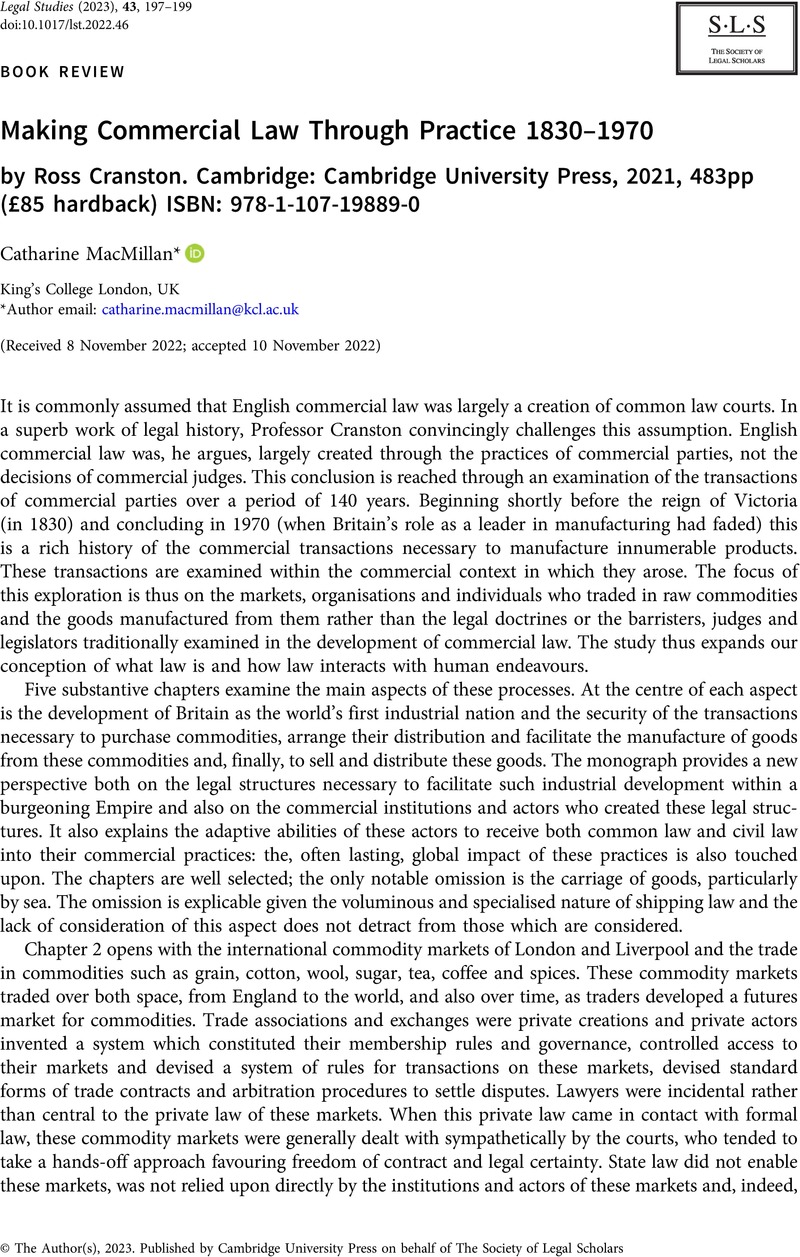No CrossRef data available.
Article contents
Making Commercial Law Through Practice 1830–1970 by Ross Cranston. Cambridge: Cambridge University Press, 2021, 483pp (£85 hardback) ISBN: 978-1-107-19889-0
Review products
Making Commercial Law Through Practice 1830–1970 by Ross Cranston. Cambridge: Cambridge University Press, 2021, 483pp (£85 hardback) ISBN: 978-1-107-19889-0
Published online by Cambridge University Press: 10 January 2023
Abstract
An abstract is not available for this content so a preview has been provided. Please use the Get access link above for information on how to access this content.

- Type
- Book Review
- Information
- Copyright
- Copyright © The Author(s), 2023. Published by Cambridge University Press on behalf of The Society of Legal Scholars
References
1 Cranston, R Making Commercial Law Through Practice 1830–1970 (Cambridge: Cambridge University Press, 2021) p 375CrossRefGoogle Scholar.


